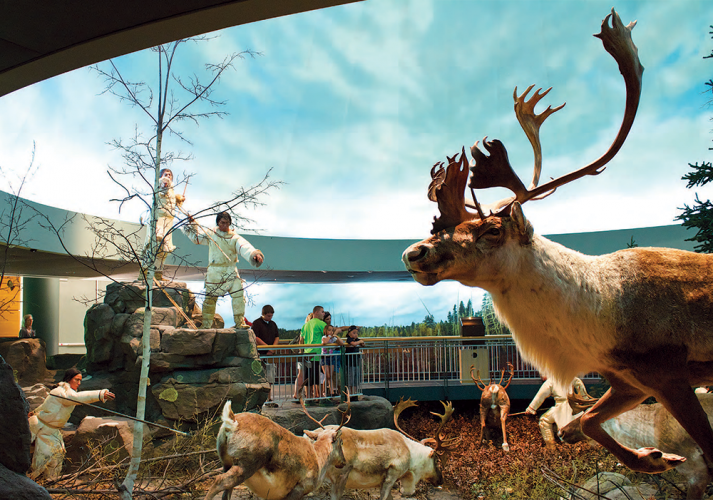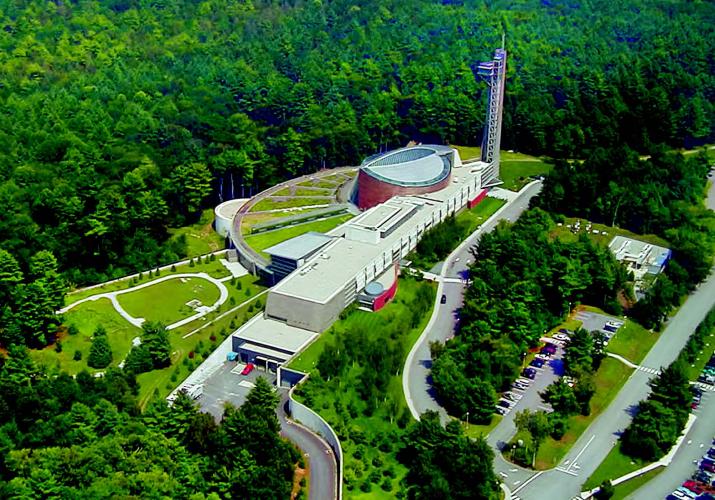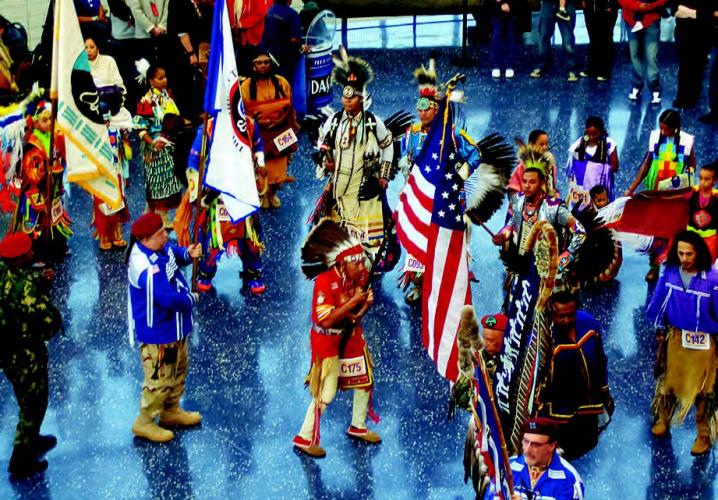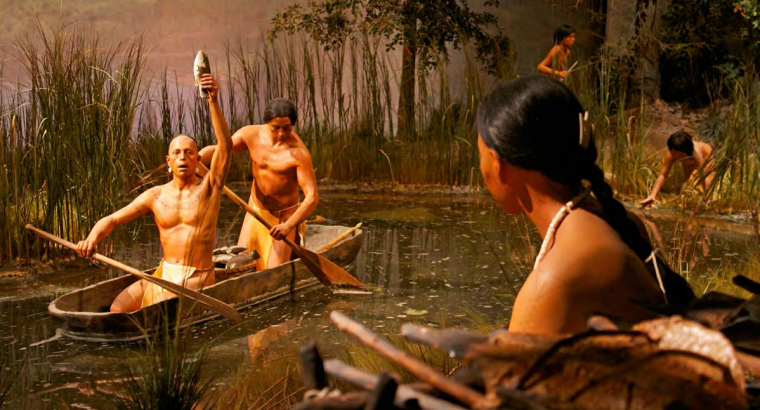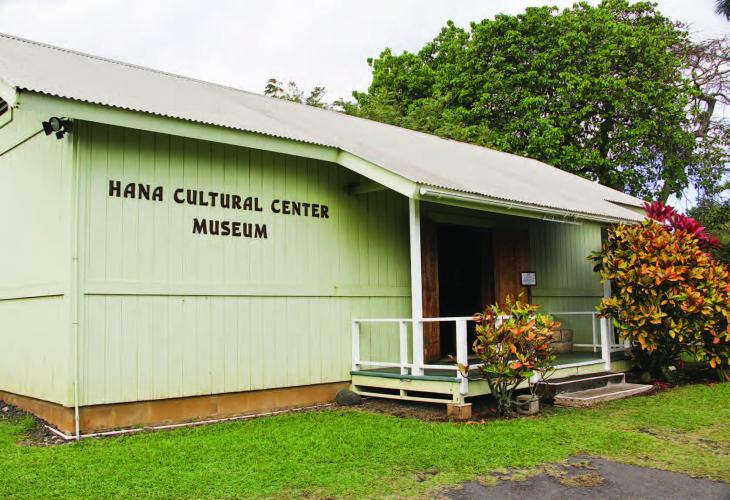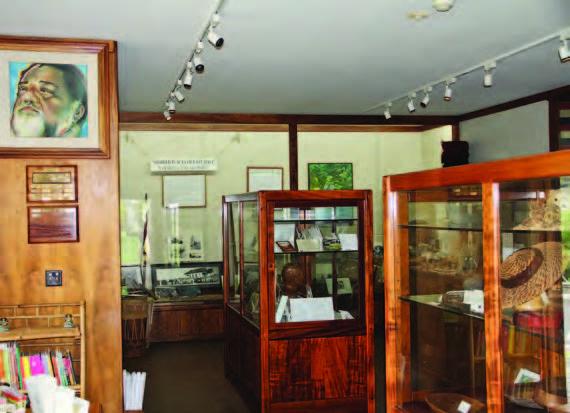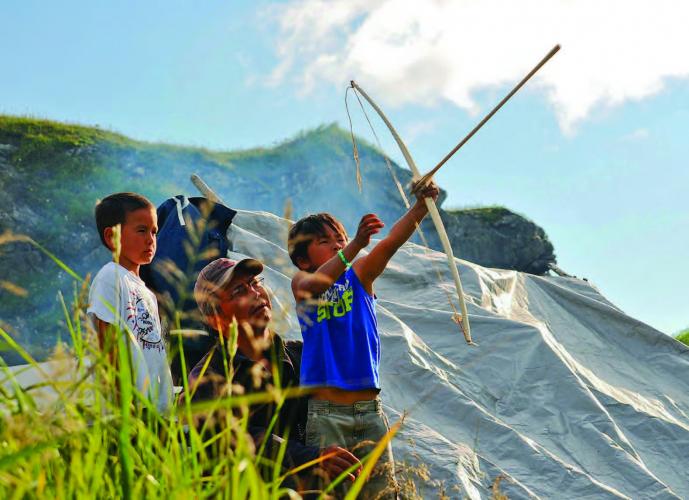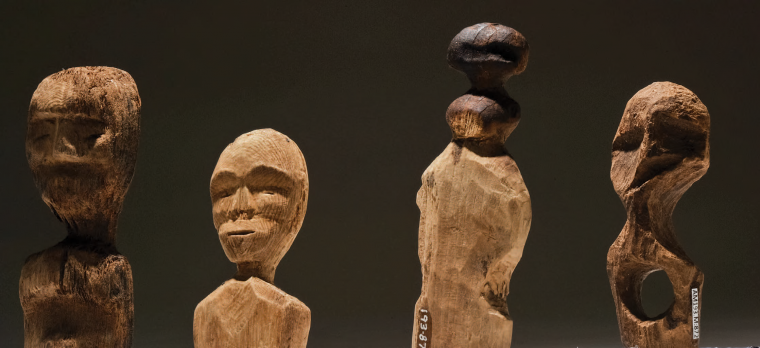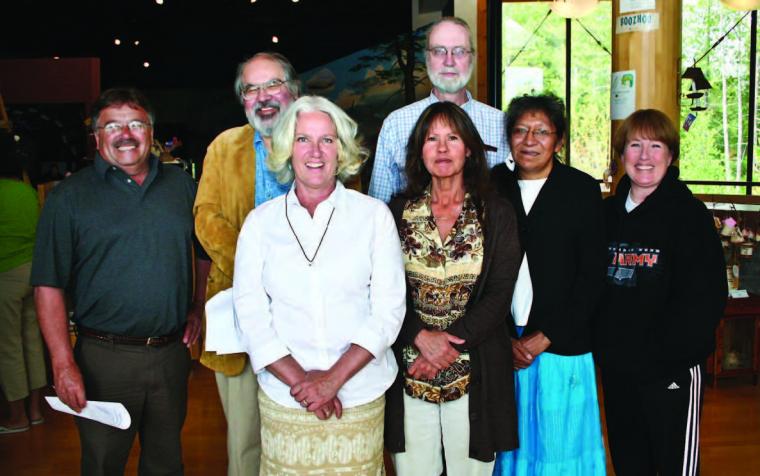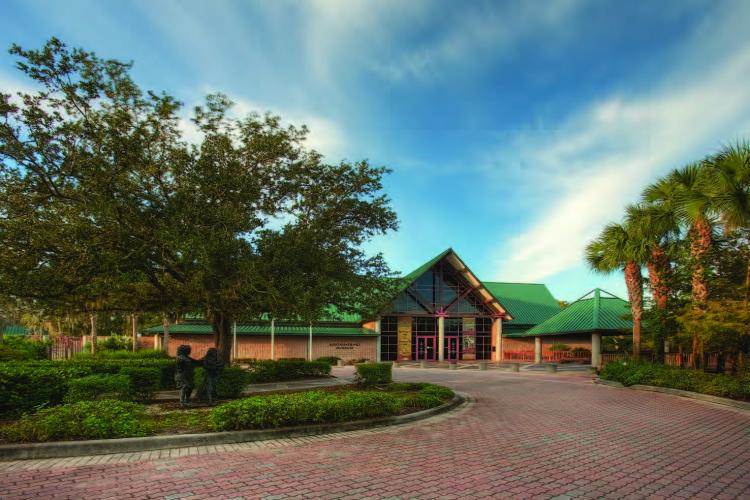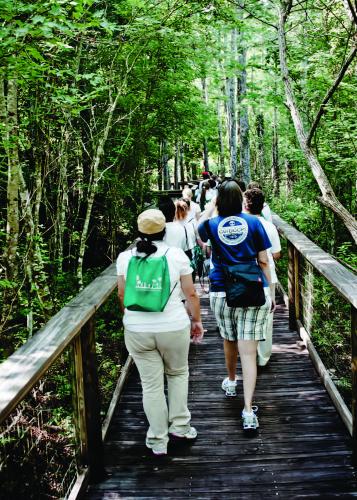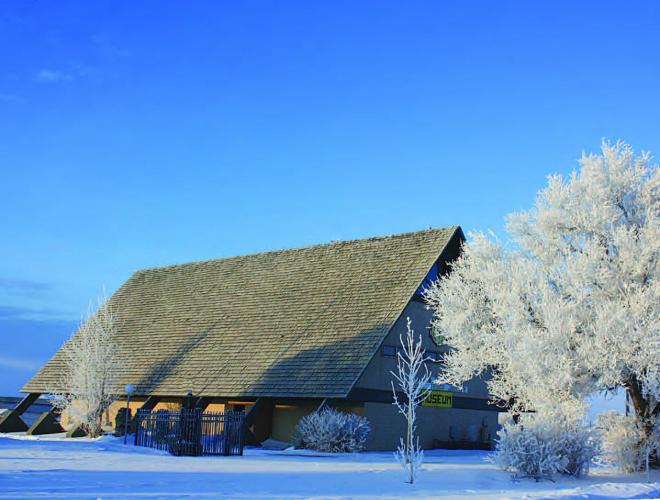“It’s been very difficult for us,” says Coila Eade, former director of the Hana Cultural Center, located in East Maui, Hawaii. As loss of funding forced the center to cut back its hours Eade, a resident of Hana for 55 years and a highly respected kupuna (elder), left retirement at the age of 89 to volunteer at the center two days a week.
Such volunteer efforts are part of the Native response to the pinch of the years-long economic downturn, which has affected operations, attendance and funding streams at tribal museums and cultural centers of all sizes and locations. From Hawaii and Alaska to southeastern Connecticut and southern Florida, even major facilities near popular tourist destinations and heavily travelled transportation routes have felt the impact.
Museums that depend on outside fundraising are understandably strained in today’s economy, but even those funded by their tribal governments are being challenged. With tribal gaming revenues declining in recent years, some museums owned by successful gaming tribes are suffering.
A few institutions have fared better than others. Some, such as the Chickasaw Cultural Center in Oklahoma and the Hibulb Cultural Center in Washington State, have recently opened with strong support from their tribal leadership. The Three Affiliated Tribes Museum in North Dakota is benefitting from a regional oil boom.
Tribal museums are a new and, until the recession, rapidly expanding form of institution, presenting the Native voice in a world previously dominated by Euro-centric anthropology. Just three were open before the 1940s, when mainstream museums such as the Smithsonian presented Indian life in the context of natural history. In the 1970s, 45 opened, more than doubling the then-existing number of Native-managed museums in the Western Hemisphere. The movement kept pace in the following decades. Today, more than 200 tribal and community museums and cultural centers dot all corners of the U.S., Canada and Mexico, and more are opening in South America, some with the cooperation of the National Museum of the American Indian.
“In the coming years, hundreds of new community-based museums could potentially open their doors,” writes Karen Coody Cooper (Cherokee Nation of Oklahoma), co-editor of Living Homes for Cultural Expression: North America Perspectives on Creating Community Museums (National Museum of the American Indian, 2003). This was written before the sharp downturn of 2009, however, and some of these plans are now on hold.
Here are reports from a sampling of these museums, reflecting the pressures facing them and their survival.
The Mashantucket Pequot Tribal Museum and Research Center
This impressive facility in southeastern Connecticut, down the road from the emerald towers of Foxwoods Casino, welcomes 55,000 visitors annually. But its corporate support has been more limited as the casino and tribe have undergone financial turmoil. The museum is now open four days a week instead of seven. Once employing 250, the museum has dropped to some 50-plus on staff, and many of those positions are part-time.
“The dollars are just not there like they were in the past,” says Mashantucket Pequot director of public affairs Bill Satti.
But the Pequot Museum is not curtailing its commitment to serve its local, national and international visitors. According to Barbara Kingsland, its marketing director, the museum remains one of the major institutions in southeastern Connecticut, famous for its state-of-the art facility, public programming, educational offerings to school groups and research capacity. “Being a Native American museum on the East Coast is unique,” says Kingsland. “The Pequot Village is the museum’s highlight; we are also enriched with our extensive libraries, archives, collections and ongoing archaeological work. Our museum caters to the Mashantucket Pequot Tribal Nation as well as New England tribes, such as supporting the artists, providing powwows and being a major resource to them.
“What you see right now is the downsizing of the museum. We’ve all been downsized. We are working smarter, working longer hours and wearing different hats. But we are still working for the cause to keep this museum a world-class destination.”
Hana Cultural Center
Hana in East Maui is one of the most traditional – and geographically isolated – Native Hawaiian towns in the Hawaiian Islands; it is often called one of the last Hawaiian places. It is home to this tiny organization, founded in 1971 to preserve Hana’s history and culture. The center, never prosperous but considered a community and state treasure, includes a replica of a pre-contact Hawaiian chief’s village. It has seen its already small operating budget diminish even more with a decrease in crucial grant support from Maui County. It has cut back its hours and is now only open Monday through Thursday. Its general manager even took a voluntary pay cut.
Alutiiq Museum and Archaeological Repository
Located on Kodiak Island, Alaska, the 5,000-square-foot museum receives about 8,000 visitors annually in spite of its remote location. It was founded in 1995 to preserve and share the cultural tradition of Alaska’s Alutiiq people. A large number of Alutiiq cultural objects were taken overseas in the 19th century, most ending up in Russia, Finland, Germany, Spain and France. Many that remained were lost during the 1946 tidal wave resulting from the Aleutian Islands earthquake.
“We’ve been documenting those [overseas] collections so that we can bring information home to our people through photographs and by building relationships so the information will be accessible in the future to community members,” says executive director Sven Haakanson (Old Harbor Alutiiq Tribe).
The bulk of Alutiiq Museum’s funding comes from six Alaska Native village corporations and one regional corporation, Kodiak Area Native Association. It receives additional support from foundations, private donations, memberships, contracts, sponsorships and gaming. But fewer funding dollars have been available in recent years. The museum has downsized staff and tightened its budget.
“In terms of the economy, it’s been painful,” says Haakanson. “But, one of the things we paid attention to a long time ago is not to become dependent upon a single entity. We try to stay as diverse as possible. We try to strategically think about what we can and cannot do.
“We realize everyone is dealing with this. Still, we are caught rubbing two pennies together to make another and try to manage the funding we already have. One of the bigger challenges we have is that we have been doing things for less. But we can’t keep doing this because we have already streamlined so much.”
Bois Forte Heritage Museum
This 3,000-square-foot museum is located on Lake Vermillion, a popular resort area, on the Bois Forte Band of Chippewa Reservation in Tower, Minn. About an hour and a half from the Canadian border and near the gateway to the Boundary Waters Canoe Area, the museum focuses exclusively on the history, culture, art and lifeways of the Bois Forte people.
“The Bois Forte people are the ones telling their story, not Europeans,” says curator William Latady. The museum has welcomed guests from Europe and from as far away as Africa and New Zealand. “People visit our museum because they are fascinated with Native culture,” says executive director Rose Berens (Bois Forte Ojibwe). “People will go out of their way to visit us.”
With the Bois Forte Band as the major funder, the museum’s budget has remained level for several years. In addition to grants, Berens and Latady supplement the budget by taking on outside projects as consultants. “The future for us is just to maintain at this point until the economy gets better,” says Berens. “We have the support of the tribal council and the Bois Forte people and will always have a presence,” says Latady.
Adds Berens, “Everyone who visits us says that they get a sense of peacefulness – a good feeling – in our building, in the way the exhibits are displayed. Many say they’ve visited the National Museum of the American Indian and say that our museum, although smaller, is better, which just amazes me!”
Sky City Cultural Center and Haak'u Museum
This 40,000-square-foot facility was built for the people of the Pueblo of Acoma, one of the oldest continuously inhabited settlements in North America, to highlight their history and to serve as an educational and research facility. It is located in one of the most dramatic landscapes of New Mexico, about 60 miles west of Albuquerque and another 15 miles off the interstate to the Pueblo. “Once travelers get off the highway they experience a great sense of calm. It’s a wonderful drive to Acoma, especially at sunrise and sunset. The whole valley opens up,” says Emerson R. Vallo (Acoma), who was brought on board as director in October 2012.
The facility is a stunning design, blending into the landscape and incorporating the architecture of Mesa Verde, Aztec, Chaco Canyon and Acoma Pueblo. “People from around the world are drawn to the Pueblo, which was one of the first Native American sites to be designated by the National Trust for Historic Preservation,” says Vallo.
Yet due to the economy, annual attendance at Sky City has dropped from around 68,000 to around 48,000 in recent years. “There aren’t as many people traveling, so we are continually trying to find ways to promote our cultural center and museum, such as collaborating with other museums and pueblos and also doing cross-advertising,” says Vallo. The non-profit museum does not receive tribal funding, so it depends largely on donations and fundraising.
Despite the challenges, Vallo is optimistic. “We have a bright future. I believe that as long as we continue to plan and carry out our vision and mission that we will be here for a very long time, just like my ancestors were here for a very long time.”
Ah-Tah-Thi-Ki Museum
“South Florida is known for Disney and the beaches,” says Ah-Tah-Thi-Ki Museum director Anne McCudden. “One of [our museum’s] most unique aspects is also the most challenging, which is our location. We are smack dab in the middle of the Everglades, in one of the ancestral homelands of the Seminoles of Florida. It’s an environmentally stunning location and a culturally relevant location, but when you tie that back to tourism it becomes a challenge.”
The economy has slowed Florida tourism and also impacted museum attendance, which now stands around 22,000. “It is somewhat comforting to know this is happening across the board in Florida but we also know this is also a struggle for museums,” says McCudden. “We are trying to make more strategic marketing moves. Everyone here struggles with the competition from Disney and the beaches.”
The Ah-Tah-Thi-Ki recently celebrated its 15th anniversary, a milestone for the museum, which is the only tribally governed museum fully accredited by the American Association of Museums, a status that was awarded in 2009. “We hope to be here for another 15-plus years,” says McCudden. “We want to continue to focus on our primary audience, our tribal members. We want to continue to be a leader in Indian ‘Museum’ Country.”
Not all tribal museums and cultural centers are struggling during these challenging economic times. This can be attributed to their status as newly opened facilities, strong tribal support which has not diminished in the wake of declining Indian gaming revenues or, in the case of the Three Affiliated Tribes, a dramatic and positive shift in their region’s economy.
Chickasaw Cultural Center
This 96,000-square-foot complex, which opened in July 2010, rests on 109 acres near the Chickasaw National Recreation Area near Sulphur, Okla. It has an Exhibit Center, the Holisso Research Center, a large-format theater and an administration building. Its grounds include an amphitheater, sky terrace, traditional village and several water features. The center uses the latest technology, live demonstrations, ancient artifacts and natural outdoor spaces to tell the Chickasaw story.
“This is a wonderful place and the most unique part of it is that we are dedicated to sharing Chickasaw history and culture,” says Valorie Walters (Chickasaw), the director of cultural center operations. “Our ultimate goal is to share with anyone and everyone who wants to learn about our culture.” Attendance has been high since the opening with approximately 166,000 visitors. The center is funded with tribal dollars. “At this time, we haven’t felt many challenges with the economic downturn,” says Walters. “We have been very lucky.”
Hibulb Cultural Center and Natural History Preserve
This 23,000-square-foot facility in Tulalip, Wash., is also a new tribal cultural center. It features a main exhibition, a temporary exhibition, two classrooms, longhouse, research library, gift shop and a fully certified collections and archaeological repository. Its Natural History Preserve encompasses 50 acres. The center opened with great fanfare in August 2011, the culmination of a 20- to 30-year dream of the Tulalip people, according to its manager Henry Gobin.
A tribal citizen born and raised on the reservation, Gobin was asked by the tribal leadership to work on the project 20 years ago. He says that when he talked to tribal members about it, “they would, without question, always say they wanted a museum to tell the true history of our people from our own point of view. Today, it’s their words you will hear and see spoken throughout.”
Support for the center comes from the tribe and from grants. Says Gobin, “The success of the Tulalip Tribes throughout this period has been based on consistent leadership. I am very proud of this. Our operating budget for the museum has remained status quo for three or four years. Tulalip has stayed ahead of the game and has done quite well, economically speaking. I think that’s due to our leadership, a good technical staff and the ability to keep above water compared to others off the reservation. You bet these have been hard economic times. But Tulalip is still going strong because our people have made a commitment.”
The Three Affiliated Tribes Museum
Located in New Town, N.D., the tribal headquarters of the Mandan, Hidatsa and Arikara Nation, this museum stands on one of the most picturesque sites in the state. It is framed by the Missouri River (now Lake Sakakawea) to the east and north and by historic buttes to the south and west. “More than 12,000 years ago, early man found this area to be a good camping site, a place to hunt the ancient bison needed for survival,” says the museum’s tribal administrator Marilyn Hudson, who is primarily Hidatsa.
“That a museum would rise on the west bank of the Missouri near a place called ‘New Town’ in the early 1960s is perplexing yet serendipitous,” says Hudson. Garrison Dam, built in the 1950s, forced people out of the area. New Town was founded as a new community for the people who had been displaced by the waters. “At the same time, oil was discovered in the Williston Basin, and Helen Gough, an Arikara woman, owned oil producing wells in this oil field,” says Hudson. Gough left funds in her will to build a heritage center.
The museum opened to the public in June 1966. It houses a large collection of artifacts, photographs, an archive, oral history and other items of cultural and historical significance to the Mandan, Hidatsa and Arikara people. Its exhibitions are both traditional and contemporary. “The State of North Dakota looks at our museum as unique, one of its kind,” says Hudson. “Local tribal members look at us as a repository, a place where they can donate things.”
The center gets most of its funding from grants, donations and oil royalties dedicated by Gough’s will, which is enough to keep the museum doors open and the lights on. The Four Bears Casino helps with such things as lawn care. “We haven’t had a downturn [due to the U.S. economy] but rather have had an upturn because of another recent oil boom [the Bakken oil boom in eastern Montana and western North Dakota],” says Hudson. “But it has negatively impacted our visitation, for example, which has gone down as the traffic has been horrendous and people have been avoiding coming here.”
In spite of the trials, leaders of the museum movement sound an optimistic note.
“One side of me says things will be really good and will be healthy because we have to reexamine how we are doing things,” says Haakanson of the Alutiiq Museum. “For example, getting our community members even more engaged in what we are doing so that they have ownership in the museum.
“But the pessimistic side of me says we are not out of this recession yet, so we need to be even more vigilant about what we are doing. But we have created a momentum that will keep moving forward no matter what, because the wonderful thing is that the people here not only expect it to happen but want it to happen. This is how we move forward.”
Eade, who is spending much of her time these days in the Hana Cultural Center’s archives, says, “We are protecting so many things of great importance here and are collecting so much that would have been thrown away. There are always challenges, but the people of Hana are ‘can do’ people and we are always looking forward.”
As Vallo says of the Acoma Pueblo’s Sky City Cultural Center, tribal museums will be here for a very long time, “just like my ancestors were here for a very long time.”

